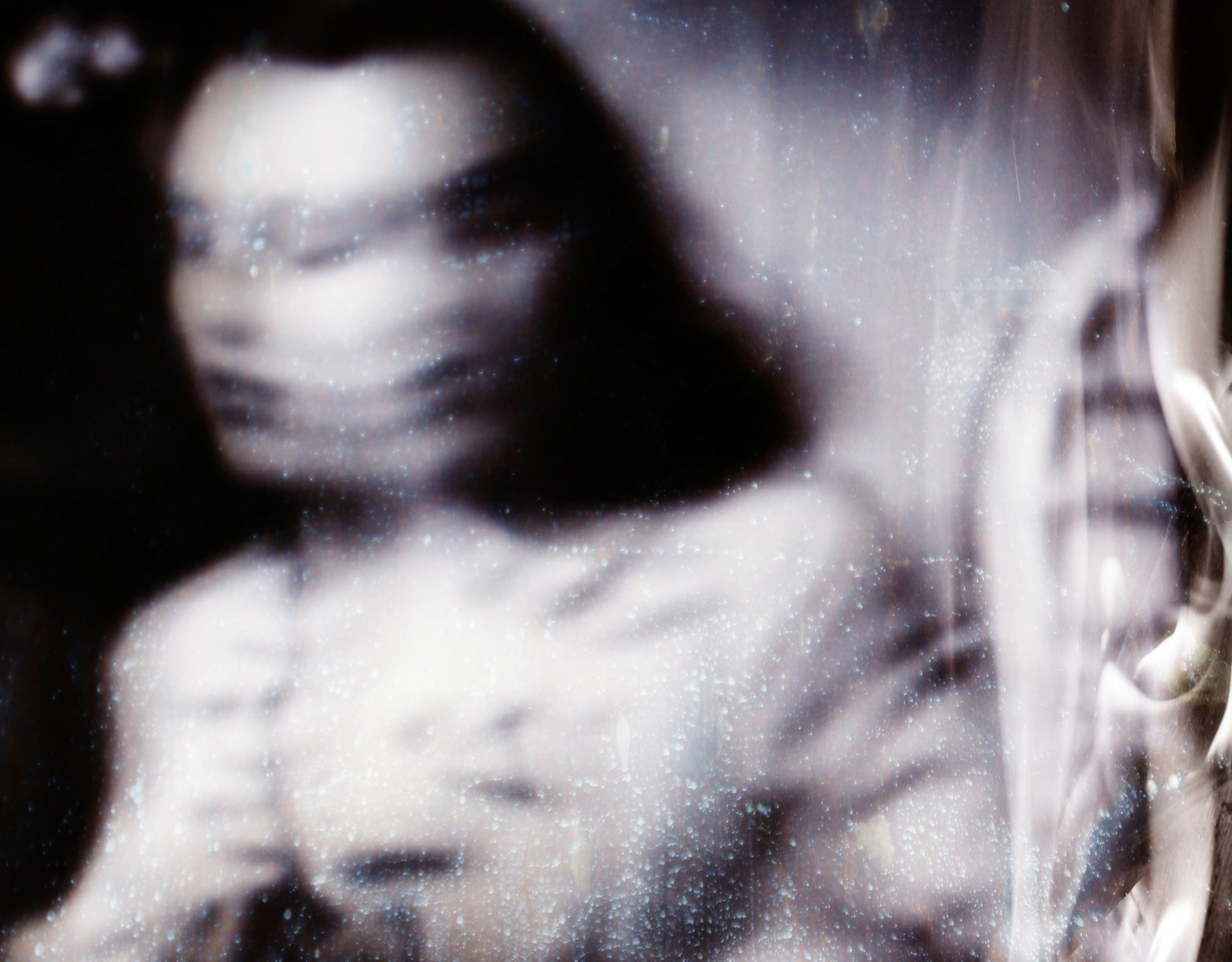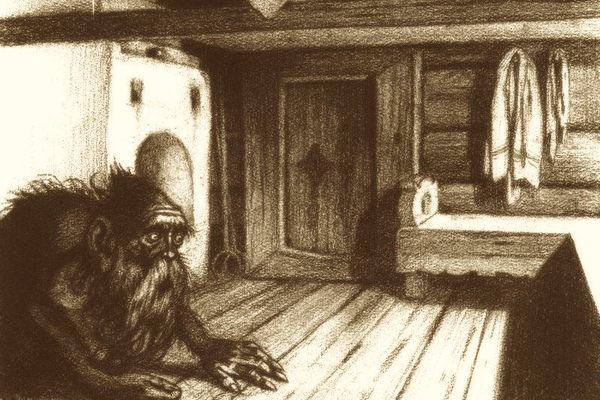Tracing the Development of the Doppelgänger
From ancient Egypt to the Victorian era, an encounter with one’s double has proven inevitably unsettling.

Before people began taking photos with our twin strangers on social media, meeting your doppelgänger was considered a bad omen. According to both English and German folklore, seeing your own double three times could mean that death would soon follow.
The German word translates to “double-goer,” a name given to the specter of a human being seen while the one it resembles still lives. While the term “doppelgänger” was coined in the late 18th century, myths of spirit doubles have persisted for thousands of years. In ancient Egypt, the ka was one aspect of the soul, depicted as a spirit identical to the body. Throughout Europe and parts of Africa, changelings were thought to be supernatural children left in place of human infants. The Norse vardøger was less ominous in nature, simply appearing in a place before the person it resembled, leading others to believe they had already arrived. English and Irish literature of the 18th and 19th centuries speaks of the fetch, an ethereal double whose appearance, like the doppelgänger, signaled death.
The word “doppelgänger” was introduced by German author Jean Paul in his 1796 novel Siebenkäs. The circuitous plot features the protagonist, Siebenkäs, exchanging identities with his friend and lookalike, Leibgeber. Ironically, Jean Paul invented two words to describe doubles—“doppeltgänger” was used to name an uncanny lookalike, while “doppelgänger” was used to describe a meal in which two courses were served simultaneously. The distinction didn’t last long following Siebenkäs, as “doppelgänger” assumed the default term for any sort of double.

The original form of the word did survive in the works of Prussian writer E.T.A. Hoffmann, who titled a story “Die Doppeltgänger” in 1821. His other exploration of the subject, Die Elixiere des Teufels, depicts a monk haunted by a chaotic double that in turn acts as a scapegoat and an antagonist.
As a literary device, the doppelgänger is perfectly suited for exploring human duality, often used to personify the darker traits of a character. The double may also serve as a foil to the protagonist’s personality, a behavioral negative as in Hans Christian Andersen’s 1847 fairy tale Skyggen, or The Shadow. In the fairy tale, a man’s shadow separates from his body and gradually becomes his walking double, demonstrating the exact opposite physical and moral traits and eventually replacing him entirely.

Fyodor Dostoyevsky’s novella The Double presents its doppelgänger as the bold, assertive reflection of a mild and antisocial government clerk. The double encroaches on the clerk’s personal affairs over the course of the story, driving him mad by the story’s end.
The doppelgänger in Edgar Allan Poe’s short story “William Wilson” seems to exist solely to ruin the narrator’s life. A boy attending school in England meets a child with the same name and appearance as himself. The double is a source of frustration from the start, and appears throughout Wilson’s life to thwart his ambitions. In this case, the original Wilson’s goals are nefarious, motivated by lust and greed only to be disrupted by his morally upright counterpart.

Doppelgänger sightings have been reported throughout history, with varying degrees of substantiation. In his biography The Life of Dr. John Donne, English writer Izaak Walton shares a disputed account of poet John Donne and his wife’s doppelgänger. One night in 1612, while staying in Paris, Donne was discovered in a deeply disturbed state. “I have seen a dreadful vision since I saw you: I have seen my dear wife pass twice by me through this room, with her hair hanging about her shoulders, and a dead child in her arms,” Donne reportedly said to his witness. “I cannot be surer that I now live than that I have not slept since I saw you: and am as sure that at her second appearing she stopped and looked me in the face, and vanished.” Walton then claims that a messenger was immediately dispatched to check on Donne’s wife, returning with the news that she was in very poor health after losing their child.
Among the many myths and rumors surrounding Catherine the Great, one tale recounts her servants discovering her double sitting on her throne while she slept. The empress ordered the imposter to be shot, and died of a stroke several weeks later.
In his autobiography, Johann Wolfgang von Goethe describes a benign but prescient encounter with his double on horseback. The sighting, occurring in the early 1770s on his way to Drusenheim, was of his spectral self in unfamiliar attire, passing without a word. Years later, Goethe once again found himself traveling that road, this time incidentally wearing the grey coat of his premonition.
Percy Bysshe Shelley wrote of a double in Prometheus Unbound, and later claimed to have seen his own doppelgänger before his death in 1822. His wife Mary Shelley later recalled that Percy had visions of strangling her, and mentioned an episode in which his double approached him. “All this was frightful enough,” she said in a letter to her friend Maria Gisborne, “and talking it over the next morning he told me that he had had many visions lately; he had seen the figure of himself which met him as he walked on the terrace and said to him, ‘How long do you mean to be content?’”

Doppelgänger encounters continued in the U.S., with several cases following a pattern of three sightings preceding death. Soon after his election in 1860, Abraham Lincoln saw his reflection doubled in the mirror, with one face beside the other with a ghostly pallor. He tied to show his wife the apparition, which appeared two more times when she was not present. While Mary Todd was at first worried about this behavior, she took the vision as a sign that he would serve two terms, but would die before the end of the second.
Lincoln is far from the only American to meet their double in the 1800s. The antebellum South was home to numerous accounts of fateful sightings, each under similar circumstances. Linda Derry, site director at the Old Cahawba ghost town in Alabama, is a curator of folklore originating from that region. She has uncovered several cases with similar circumstances as Lincoln’s sightings.
“Repeat meetings, specifically three, always meant that the end was near,” says Derry. “If someone else saw your doppelgänger, it could mean that you may be very ill.”
An 1884 issue of Sunny South tells of a county clerk from Cahawba who contracted malaria. One night, shivering and unable to sleep, he saw the shadow of a man enter his room. As the visitor approached his bed, the clerk saw in the dim light that the face looking down on him was his own. When the same incident occurred the next night, the clerk called for two friends to corroborate his story. The two men, both practical farmers, arrived as soon as they could.

The farmers kept watch as their friend tried to sleep, and were startled late in the night as the figure of the clerk himself stepped into the candlelight. The men approached the double, which retreated into the shadows. They never saw the visitor again, and the clerk succumbed to his sickness soon after that final encounter.
Addressing the prevalence of historical doppelgänger accounts, Catherine Crow writes in The Night-Side of Nature, or, Ghosts and Ghost-seers, “We might, indeed get rid of them by denying them, but the instances are too numerous, and the phenomenon has been too well known in all ages to be set aside so easily.”
To provide a pragmatic explanation, psychologists have identified neurological conditions like heautoscopy in which one hallucinates their own image at a distance. This may explain many cases in which the original was the only one to see their double. Sightings by multiple witnesses still lend themselves to supernatural supposition, however. As Crow observes, the doppelgänger is often said to appear as one sleeps or falls ill. This has led to a belief that when our bodies can no longer hold on so tightly, our spirits may be free to wander.
The context of doppelgänger encounters may be determining factor of how they are perceived. If you see your double in line at the airport, you may naturally find the resemblance amusing and snap a photo. Your reaction may be different if, when going to bed, you find that you’re already there.








Follow us on Twitter to get the latest on the world's hidden wonders.
Like us on Facebook to get the latest on the world's hidden wonders.
Follow us on Twitter Like us on Facebook